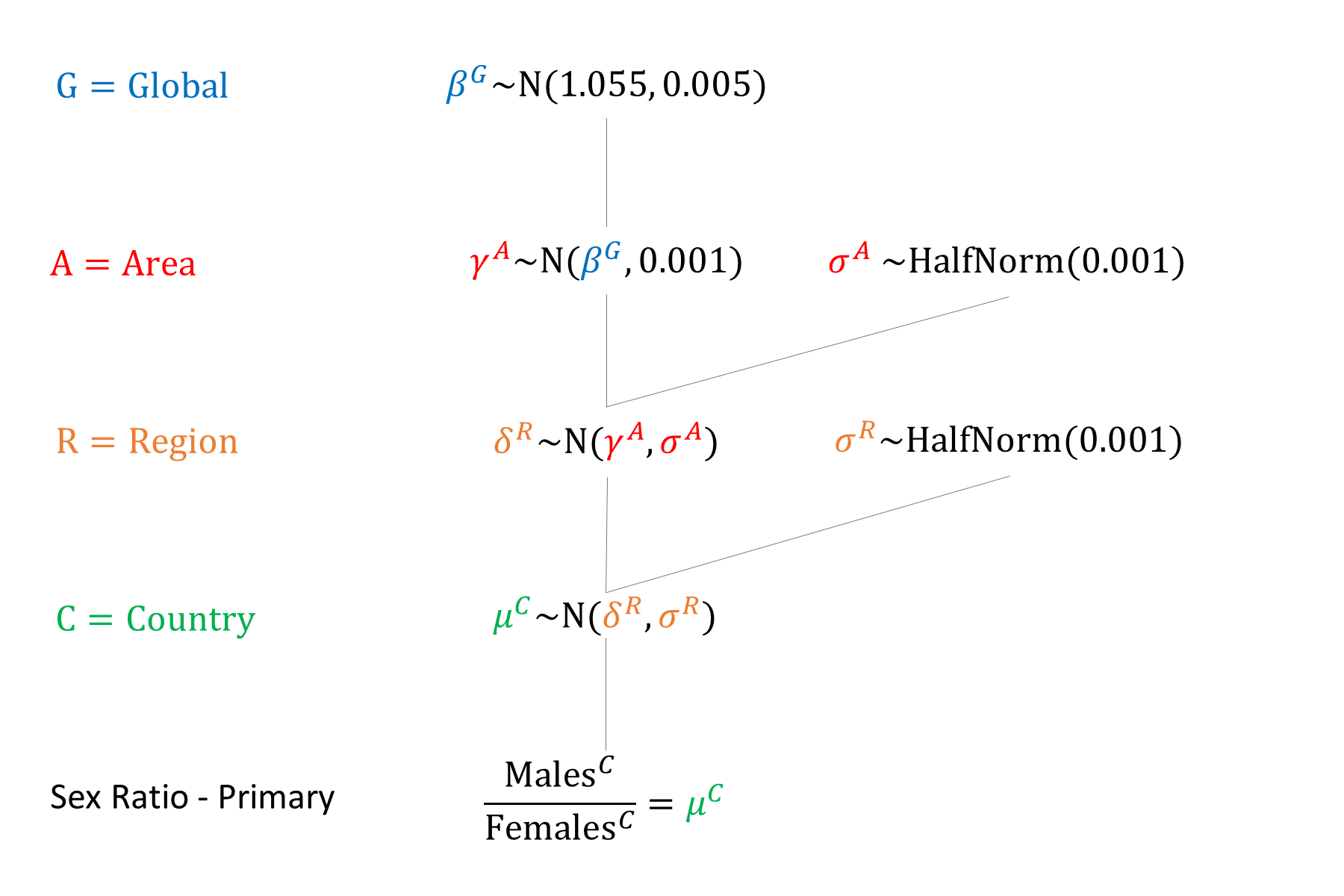Sex Ratio - Primary
Model Inputs \(\rightarrow\) Biological Parameters \(\rightarrow\) Sex Ratio - Primary
Overview
The primary sex ratio is a measure of how many males are conceived compared to females. This ratio is used to simulate the sex of fetuses at conception.
Data
In humans, the natural primary sex ratio has been estimated at about 1.05 to 1.06,[1] although it has been shown to vary. A study of trends in the United States over many years found that the sex ratio at birth was 1.06-1.07 for mothers having their first baby, and that it decreased with each additional birth towards 1.03.[2] Recent research also claims that the sex ratio at conception is actually 1.00, and thus not male-biased as is commonly thought.[3] Instead, the authors show that total female mortality during pregnancy exceeds total male mortality, leading to a sex ratio above 1.0 as gestation progresses. However, we do not model differential risks of miscarriage by fetal sex, and so we assume that the sex ratio is constant throughout gestation, and by birth order.
Parameters
For simplicity, we assume that the primary sex ratio remains constant over time. We constructed a hierarchical model (global/area/region/country) to allow for potential differences due to genetics or environmental exposures.

Priors
Model Implementation
We use the sex ratio to simulate fetal sex at conception. We also compare the primary sex ratio to the secondary sex ratio in order to simulate the probability of sex selective abortion.
References
- Grech V, Savona-Ventura C, Vassallo-Agius P. Unexplained differences in sex ratios at birth in Europe and North America. BMJ 2002; 324(7344): 1010-1. DOI: https://doi.org/10.1136/bmj.324.7344.1010
- Mathews TJ, Hamilton BE. Trend Analysis of the Sex Ratio at Birth in the United States. National Vital Statistics Reports 2005; 53: 20. http://www.cdc.gov/nchs/data/nvsr/nvsr53/nvsr53_20.pdf
- Orzack SH, Stubblefield JW, Akmaev VR, et al. The human sex ratio from conception to birth. Proc Natl Acad Sci USA 2015; 112(16): E2102-11. DOI: https://doi.org/10.1073/pnas.1416546112
GMatH (Global Maternal Health) Model - Last updated: 28 November 2022
© Copyright 2020-2022 Zachary J. Ward
zward@hsph.harvard.edu